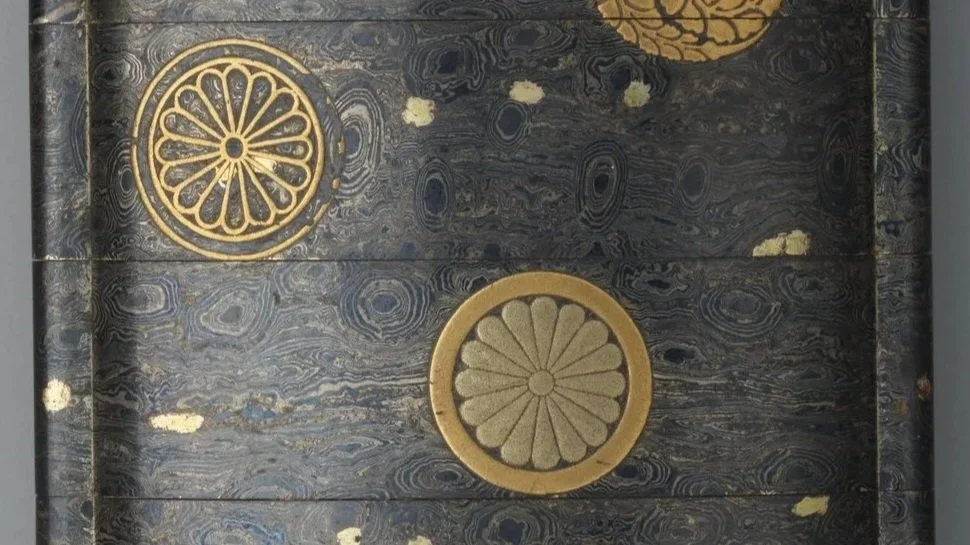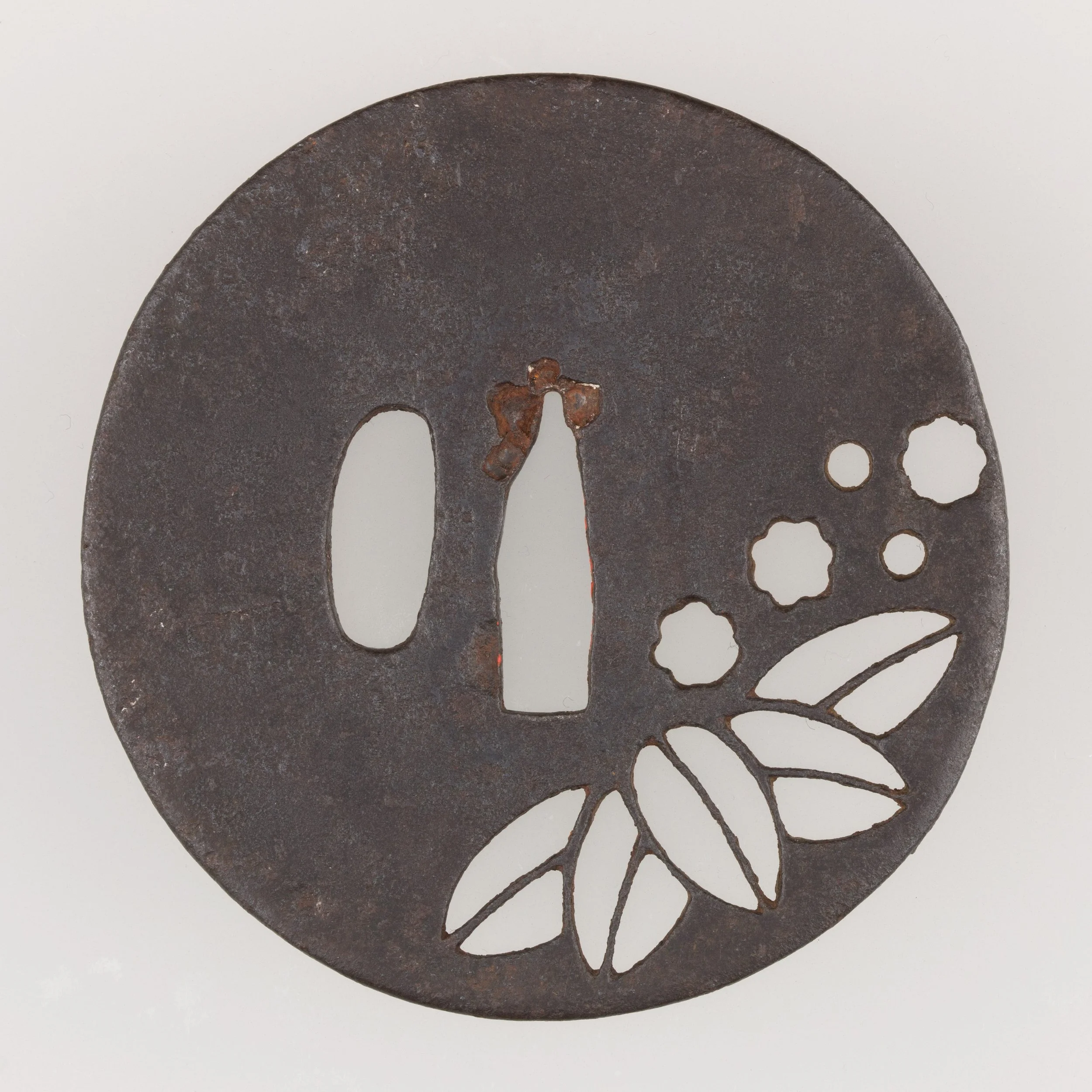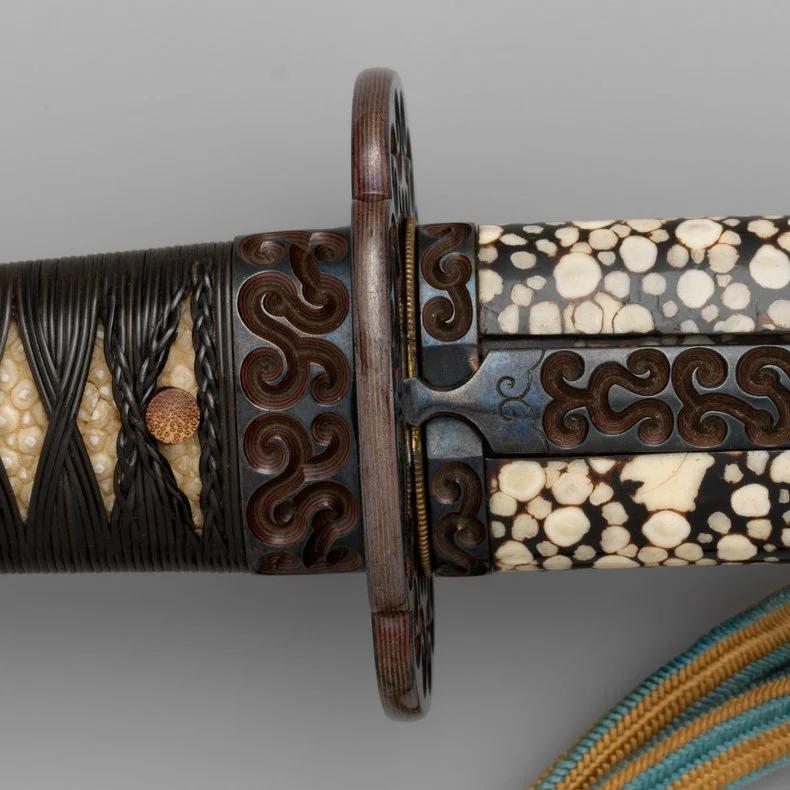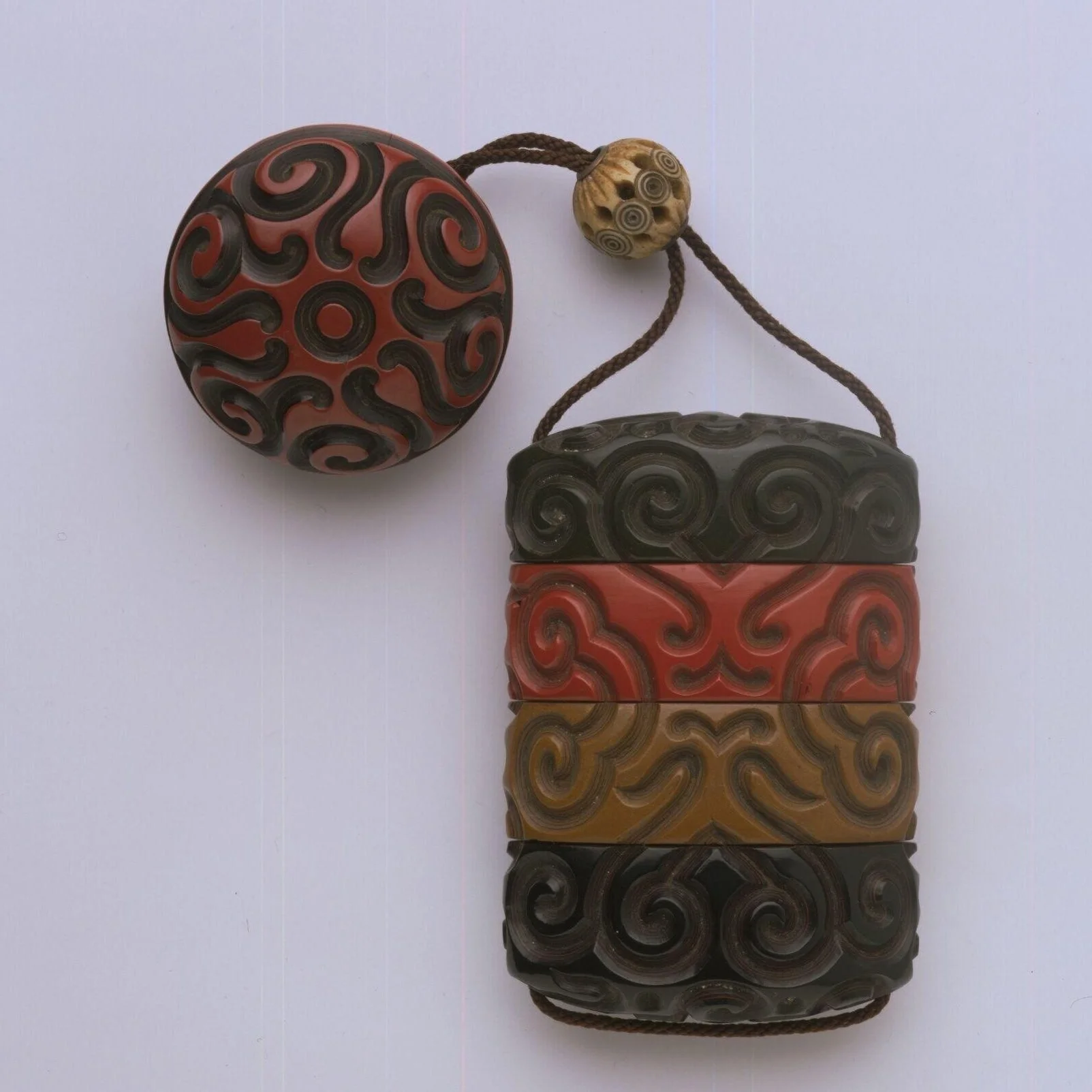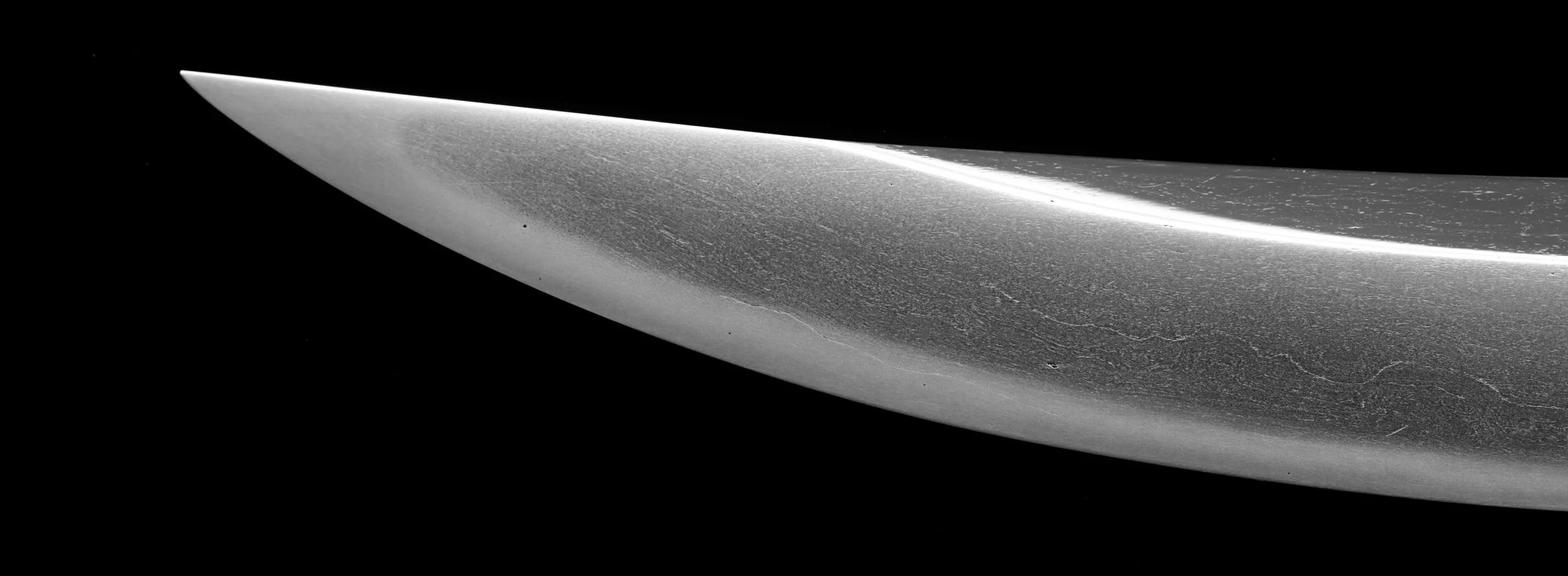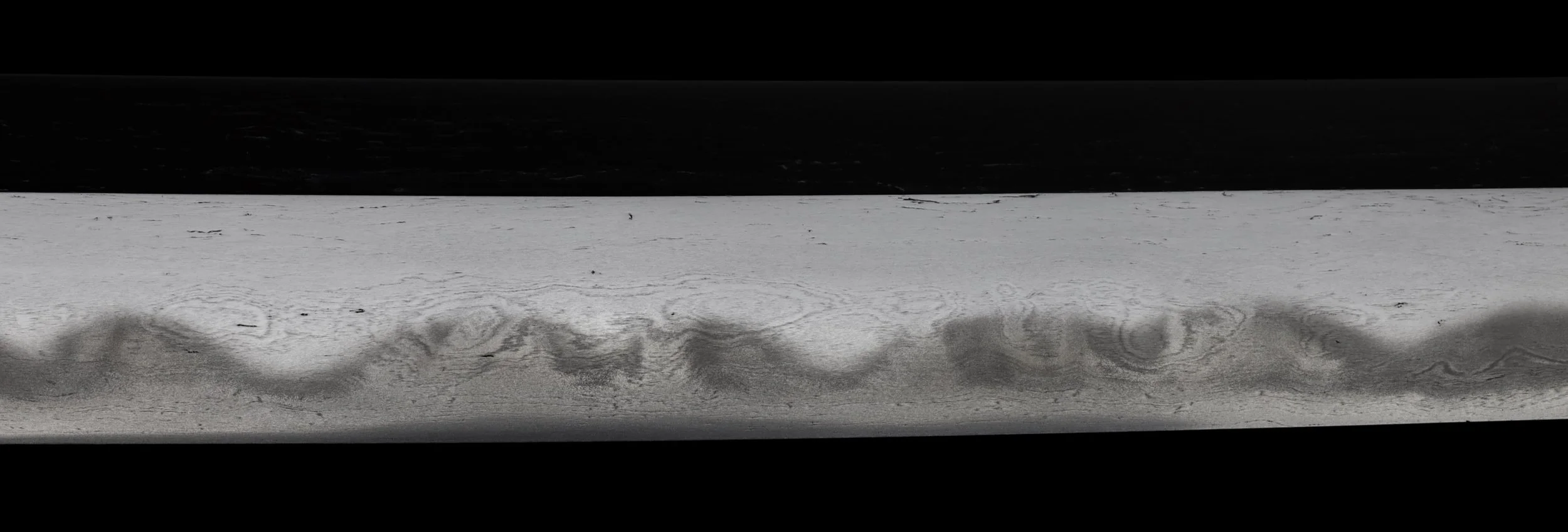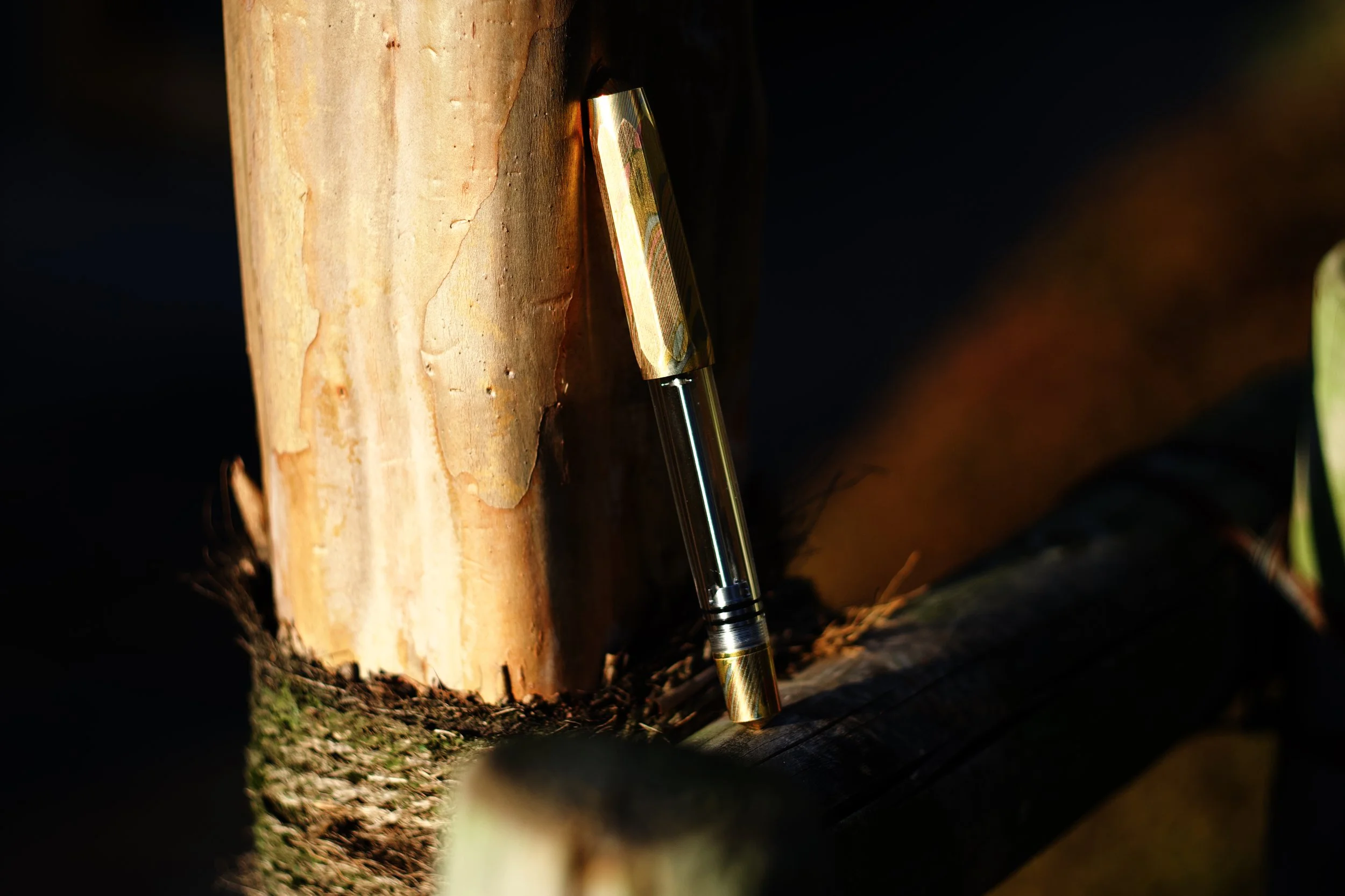The Origins of Mokume-gane
Close up of Mokume-gane pattern on a Japanese Metal Inrō, The Metropolitan Art Museum, New York.
Table of Contents
Mokume-gane (木目金) refers to a traditional Japanese metalworking technique named after its resemblance to wood grain patterns. It is traditionally made of copper-based alloys, however modern adaptations have also incorporated precious metals like gold, silver, and platinum.
The art of Mokume-gane was created by a master sword fitting craftsman Shoami Denbei during the early Edo period almost 400 years ago. Like many innovations, Mokume-gane was born out of the inspiration of centuries old techniques and art forms, while being reimagined in a new form.
While there are no written records of how Mokume-gane was initially developed, we can learn about its roots through the study of works created by Shoami Denbei prior to the appearance of Mokume-gane.
Several factors had to come together at the perfect time for Mokume-gane to have been successfully created, and is one example of the embodiment of artistic and technical ingenuity that drives the development of the highest forms of art.
The Functional Art of Japanese Sword Guards - The Tsuba
Edo period tsubas decorated with Guribori and Mokume-gane techniques. Top Left: Guribori, Bottom Left and Right: Mokume-gane, Victoria and Albert Museum, London.
Mokume-gane was first seen incorporated into the design of Japanese sword guards known as tsuba (鍔). They protect the user’s hand from sliding onto the blade, while also providing a surface for artistic expression and storytelling.
During the warring periods, the tsuba had to be functional and practical, acting as both a counter balance to the weight of the blade and also protecting the user's hand. The designs from this period were therefore utilitarian and practical, often with simple shapes or minimal ornamentation.
Tsuba from the 14th Century (left) and 16th Century (right) Japan, The Metropolitan Museum of Art, New York.
Samurai swords or katana were seen as not only functional tools, but an extension and embodiment of the owner’s mind and spirit. As Japanese society shifted towards more peaceful and stable times during the Edo period, the katana evolved into more of an ornamental and status signal rather than being used for battle.
Tsuba designs in the Edo period became increasingly ornate and detailed, leading to a flourishing of tsuba craftsmen and artisans during this period of time. Different techniques and expressions of art were explored by the craftsmen of this period, to innovate and push the boundaries on what could be achieved when creating tsuba and other sword mounts.
Tsuba with different styles of decoration. Top Left: Mokume-gane, Top Right: Shakudo with peony and butterflies, Middle Left: Shakudo with flowers, Middle Right: Shakudo and enameled cloisonné, Bottom Left: Silver inlay, Bottom Right: Shakudo with hawk and waves. The Metropolitan Museum of Art, New York.
The level of craftsmanship and techniques used to create these swords therefore held major significance, often demanding the highest level of dedication and skill to create enduring pieces of functional art that still lasts to this day.
Influence From Chinese Carved Lacquer
Before we explore the development of Mokume-gane, we need to delve into an ancient form of lacquer art that originated in China over 1000 years ago.
Tixi (剔犀) in Chinese, or Guri (ぐり) in Japanese, is an ancient carved lacquer technique that involves applying up to a hundred or more layers of coloured urushi (red, black, and yellow), which is then carved to reveal the underlying layers and create a high relief and three-dimensional design. This was a very laborious and expensive process, requiring extremely long periods of time to apply all the layers of lacquer before it is carved into.
Guri carved lacquer Ming dynasty bowl (left) and Yuan dynasty cup (right), The Metropolitan Museum of Art, New York.
Guri was already well established as a popular lacquer technique in Japan during the Edo period. This form of lacquerware first came into popularity in China during the Song dynasty (960-1279) and was later imported into Japan during the Kamakura (1185-1333) and Muromachi periods (1336-1576).
In Japan, this form of lacquer art gained widespread appreciation across society, with Japanese artisans adopting this artform and eventually transforming it into what is currently known as Kamakura-bori (鎌倉彫).
Momoyama period (1573–1615) incense box with Kamakura-bori style decoration, The Metropolitan Museum of Art, New York.
In the Edo period, items like inro cases, incense boxes, and tea utensils were commonly decorated with the Guri carved lacquer technique, and it undoubtedly served as an inspiration to Shoami Denbei and later artisans for creating their tsuba designs.
Side view of a tsuba showing the alternating metal laminate structure used to create Guribori decorations, The Metropolitan Museum of Art, New York.
Shoami Denbei is the first craftsman who is attributed to creating tsuba that mimicked the Guri carved lacquer technique. This technique was called Guri bori (ぐり彫り) and involved stacking layers of different metals, most commonly copper, shakudo (赤銅) a copper-gold alloy, shibuichi (四分一) a copper-silver alloy, gold, and silver, which were then fused into a billet which can then be carved into to reveal the different metal layers. The ability to fuse different metals without melting them was crucial to being able to maintain the separate layers and properties, such as the distinct colours of each metal.
A side by side comparison with Guri carved lacquer and Guri bori tsuba shows the obvious similarities and the inspiration behind developing this technique, using metal to create the layered look instead of lacquer.
Guri carved lacquer inro (left) and Guribori tsuba by Takahashi Okitsugu (right), Victoria and Albert Museum, London.
The development of Mokume-gane was therefore only possible after the successful creation of metal laminates used in Guri bori, that were stable enough to carve into and further manipulate through hammering and forging to create flattened metal sheets.
The Realisation Of Mokume-gane: An Exploration Of Nature’s Designs
Mokume-gane tsubas from the Edo period. Top: Mokume-gane tsuba with Insect and Leaves, The Metropolitan Museum of Art, New York. Bottom: Mokume-gane tsuba with Sparrow and Hawk by Hamano Masanobu, The Walters Art Museum, Baltimore.
After Guri bori was established, Shoami Denbei made the connection that the carved motifs could be further flattened to create a new type of design, which was eventually called Mokume-gane. While Mokume-gane is specifically used to describe this particular form of metalwork, woodgrain-like patterns were not a novel idea in the realm of sword making.
Bizen Osafune Sukesada Uchigatana, made in 1523. Image from Mandarin Mansion
Section of blade showing the hada. Image from Mandarin Mansion.
The art of creating extremely high quality katanas had already been perfected over the previous centuries, through the process of refining and layering high quality carbon-steel called Tamahagane (玉鋼). During this forging process, swordsmiths developed techniques to express subtle but detailed patterns within the blades which were named after their resemblance to different wood grains and patterns found in nature.
The repeated layering of the carbon steel during the blade forging process creates different grain patterns known as Hada (肌). Common patterns related to wood grain were known as:
Masame Hada 柾目肌 (Straight Grain)
Mokume Hada 木目肌 (Wood Burl Grain)
Itame Hada 板目肌 (Wood Grain)
Ayasugi Hada 綾杉肌 (Wave Grain)
Examples of different grain patterns. Top: Masame hada, Middle: Itame hada, Bottom: Mokume hada, Images from Mandarin Mansion.
It is therefore reasonable to assume that the presence of such patterns in swordsmithing would have influenced the development of Mokume-gane in the early stages of its conception, given the association of the tsuba as part of the sword design.
Mokume-gane developed into a highly advanced craft during the Edo period, with different styles emerging across this period of time. Due to societal changes during the Meiji period, the rapid decline of Mokume-gane almost led to its demise as it fell into obscurity by the early 20th century. Efforts in the 1970s to revive this artform eventually led to its comeback in the following decades, where it is now a popular technique to create jewelry and small accessories.
To learn more about the artistic heritage of Mokume-gane and its expansion into the West please follow us here: The Evolution of Mokume-gane: From Japan to the West and Back Again, where we explore its lineage within Japan, and the incorporation of new technologies and ideas in the West that further developed Mokume-gane into its current form.
View our related products:
Additional Resources:
NPO Japan Mokumegane Research Institute:
https://www.mokumegane.org/e/
Textbook of Mokume-gane:
https://www.amazon.com/Textbook-Mokume-gane-Masaki-Takahashi/dp/4990498216/
The Evolution of Tsuba:
https://www.kitchenstudiofactory.com/critical-craft-biography/forged-in-iron-adorned-in-gold-the-evolution-of-tsuba
Jihada Explained: 6 Types of Grain Patterns on the Blade:
https://swordis.com/blog/jihada/
Other Mokume-gane Resources:
https://www.mokume.com/mokume-gane-a-comprehensive-study/table-of-contents


